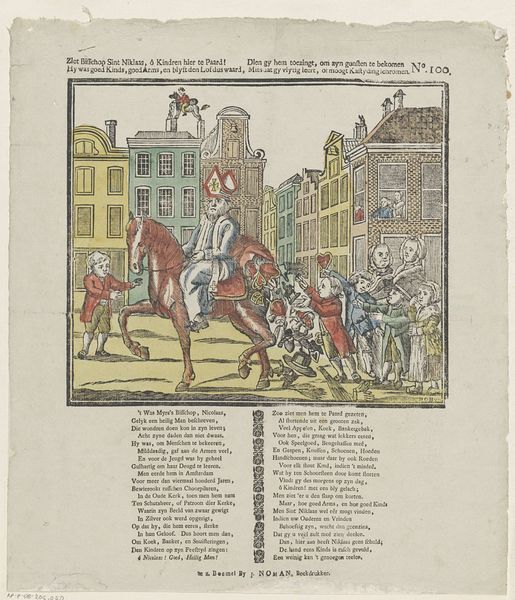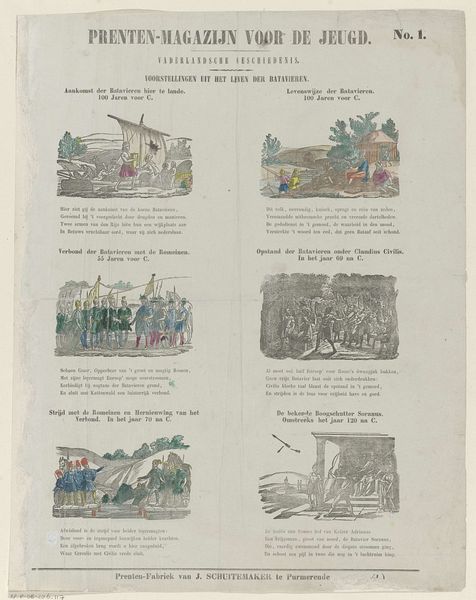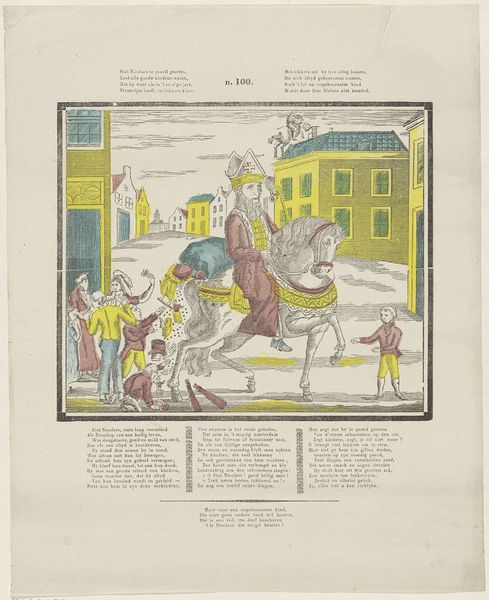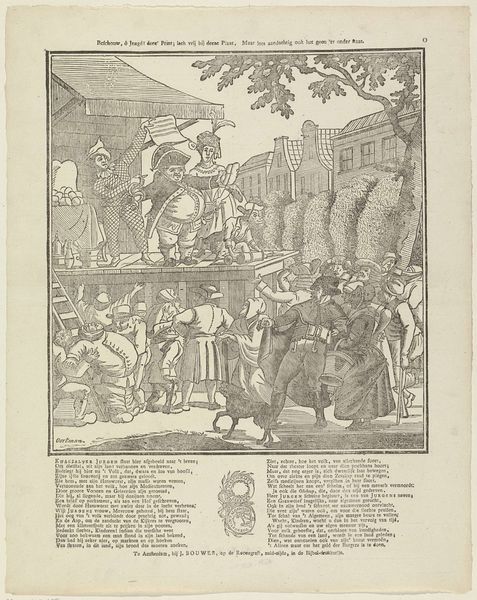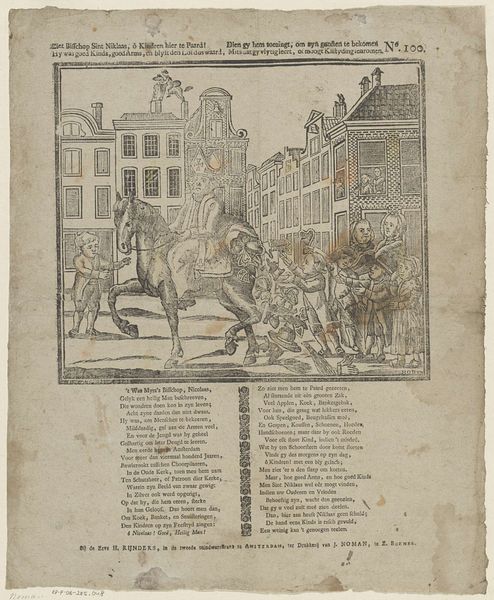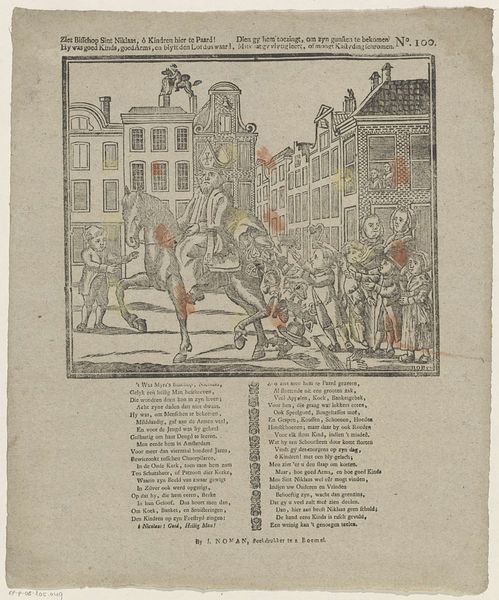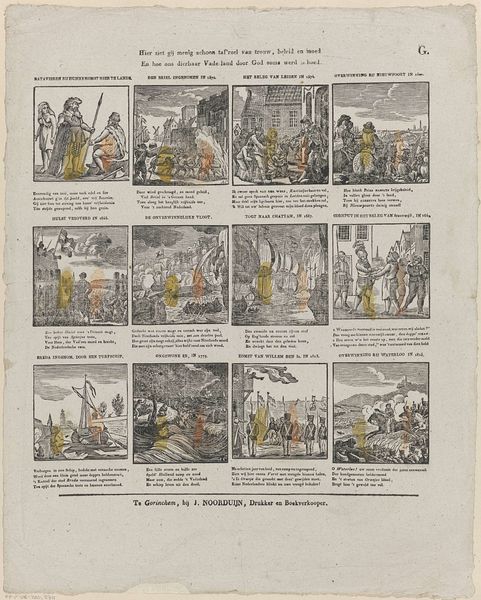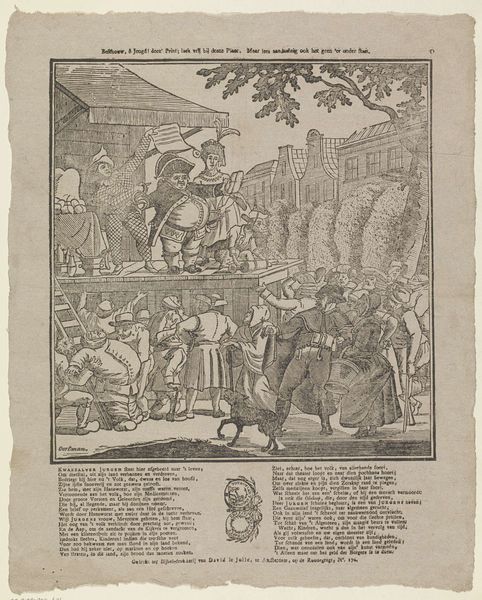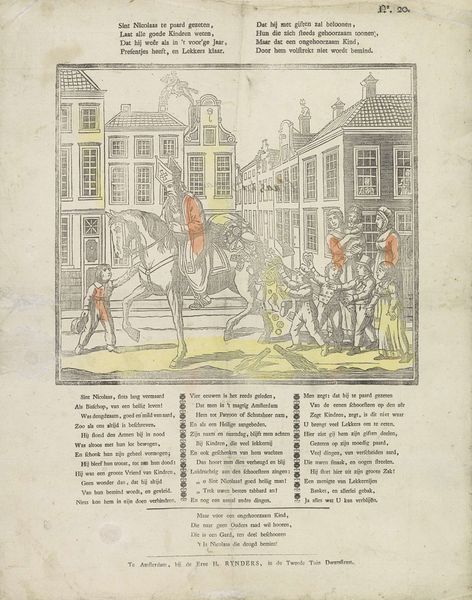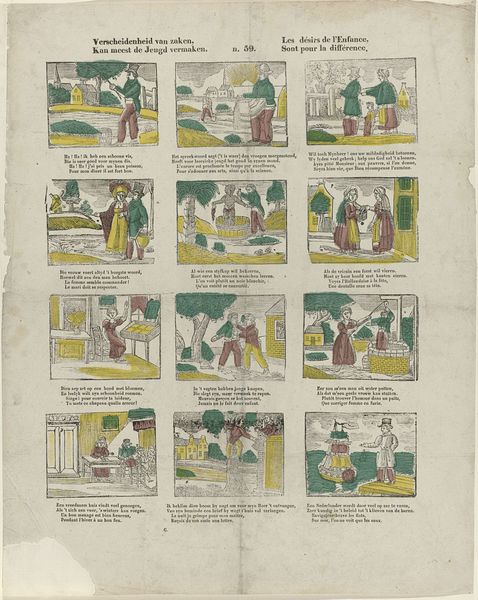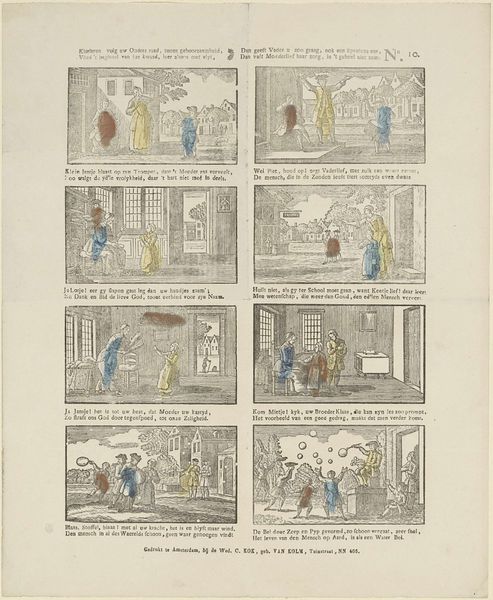![Sint Nicolaes te paerd gezeten, / Laet alle goede kindren weten [(...)] by Glenisson & Van Genechten](/_next/image?url=https%3A%2F%2Fd2w8kbdekdi1gv.cloudfront.net%2FeyJidWNrZXQiOiAiYXJ0ZXJhLWltYWdlcy1idWNrZXQiLCAia2V5IjogImFydHdvcmtzL2Y4ODRjZTRkLWY1NjItNDllNS1iYTZkLWYzMDRiNjZkMGY3ZS9mODg0Y2U0ZC1mNTYyLTQ5ZTUtYmE2ZC1mMzA0YjY2ZDBmN2VfZnVsbC5qcGciLCAiZWRpdHMiOiB7InJlc2l6ZSI6IHsid2lkdGgiOiAxOTIwLCAiaGVpZ2h0IjogMTkyMCwgImZpdCI6ICJpbnNpZGUifX19&w=3840&q=75)
Sint Nicolaes te paerd gezeten, / Laet alle goede kindren weten [(...)] 1833 - 1856
0:00
0:00
print, etching, engraving
#
narrative-art
# print
#
etching
#
landscape
#
etching
#
folk-art
#
genre-painting
#
engraving
Dimensions: height 395 mm, width 320 mm
Copyright: Rijks Museum: Open Domain
Editor: So, here we have an etching and engraving print, "Sint Nicolaes te paerd gezeten, / Laet alle goede kindren weten [(...)]", created sometime between 1833 and 1856 by Glenisson & Van Genechten. The scene depicts Saint Nicholas on horseback, surrounded by children in a town square. There's a real folk-art feeling to it. How do you interpret this work? Curator: This print offers a fascinating glimpse into the construction of cultural narratives around Saint Nicholas, or Sinterklaas. We see him here not simply as a religious figure, but as a figure embedded in a specific social and economic landscape. Notice how the surrounding architecture and the clothing of the children suggests a particular class dynamic. What might this scene be telling us about the role of gift-giving and reward in reinforcing social hierarchies? Editor: That's an interesting point. I hadn’t considered that it might not be purely a celebration. It feels like the artist is showing how society rewards or punishes. Do you think the presence of the poem is relevant? Curator: Absolutely! The inclusion of the text alongside the image situates the whole work within a didactic tradition. These aren't just illustrations, they are tools for shaping behavior. The narrative emphasizes obedience and good behavior as paths to reward, which of course serves the interests of those in power. How does the artistic style itself play into that, would you say? Editor: The directness of the imagery, its accessible style, does lend itself to instruction. I’m now viewing the work through the lens of societal norms and teachings rather than just folk art. Curator: Precisely. Art doesn't exist in a vacuum. Understanding its historical and social context allows us to see it not just as a decorative object, but as an active participant in cultural dialogue and power relations. Editor: That's so interesting. Thank you for sharing! I'll definitely look at prints differently from now on.
Comments
No comments
Be the first to comment and join the conversation on the ultimate creative platform.
